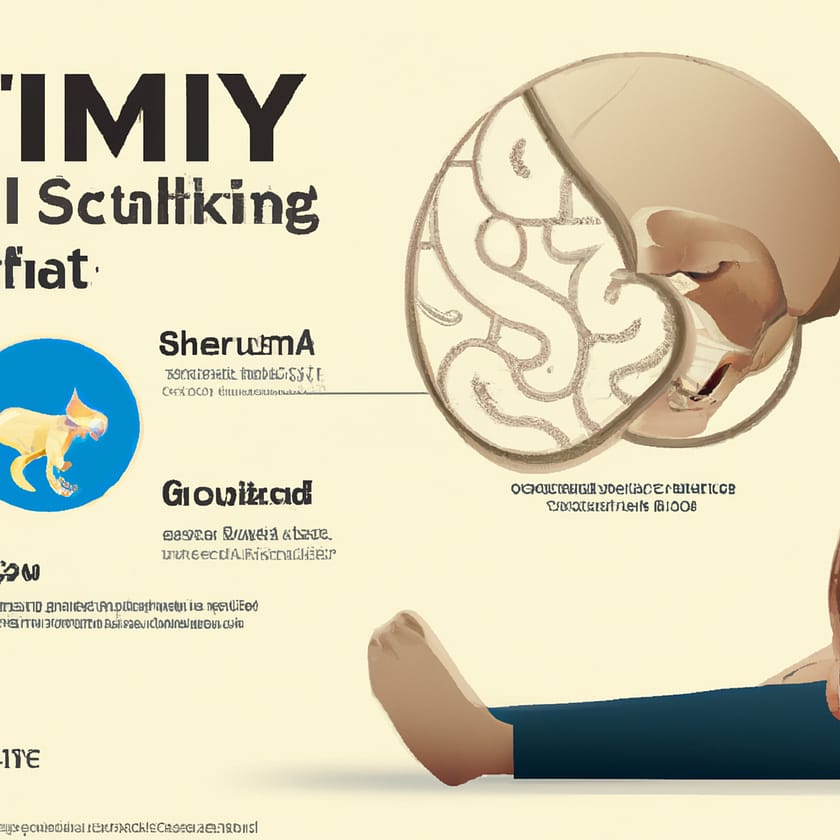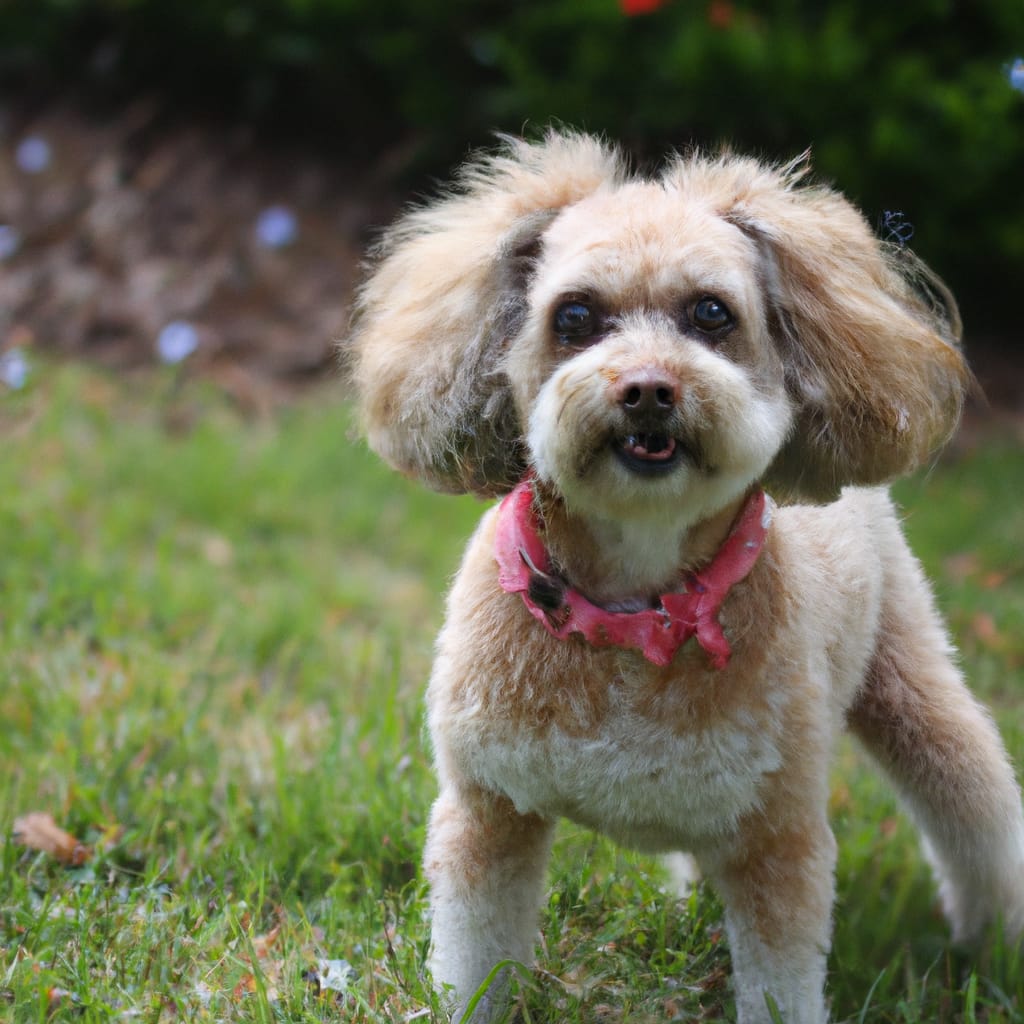Cerebellar Hypoplasia In Dogs: What It Is And How To Care For A Wobbly Pup
Imagine having a furry friend who is constantly stumbling and swaying, their movements not quite matching up with their intentions. This is a common reality for dogs with a condition called cerebellar hypoplasia. In this informative article, we will explore what exactly cerebellar hypoplasia is and how you can provide the best care for your wobbly pup. From understanding the causes and symptoms to implementing strategies for a safe and comfortable environment, you’ll discover everything you need to know to support your four-legged companion. So, let’s jump right in and help your pup navigate the world with confidence and love.

Overview of Cerebellar Hypoplasia in Dogs
Cerebellar hypoplasia is a neurologic condition that affects dogs and is characterized by underdevelopment or incomplete development of the cerebellum, which is the part of the brain that controls and coordinates movement. This condition is congenital, meaning it is present at birth, and it results in various motor and balance issues for the affected dogs. While cerebellar hypoplasia cannot be cured, with proper management and care, dogs with this condition can still lead happy and fulfilling lives.
Definition of cerebellar hypoplasia
Cerebellar hypoplasia refers to the incomplete development of the cerebellum, the part of the brain responsible for coordination and balance. It occurs during the early stages of fetal development when the cerebellum fails to grow or develop properly. As a result, the affected dogs experience difficulties in controlling their movement, leading to uncoordinated and wobbly movements.
Causes of cerebellar hypoplasia
Cerebellar hypoplasia in dogs can be caused by various factors, including viral infections, trauma, genetic mutations, exposure to toxins, and nutritional deficiencies during pregnancy. Viral infections such as the parvovirus or distemper virus can interfere with the development of the cerebellum if the pregnant dog is exposed to the virus. Additionally, genetic mutations and certain environmental factors can also contribute to the development of this condition.
Prevalence of cerebellar hypoplasia in dogs
Cerebellar hypoplasia is relatively rare in dogs, and the prevalence varies depending on the breed and other factors. Some dog breeds are more prone to developing cerebellar hypoplasia due to their genetics, while others may be at higher risk due to exposure to certain viruses or environmental factors. However, it is important to note that cerebellar hypoplasia can occur in dogs of any breed or mix, and it is not limited to specific populations.
Signs and Symptoms
The signs and symptoms of cerebellar hypoplasia in dogs can vary in severity, but they all relate to the affected dog’s motor skills and coordination abilities. Some of the common signs and symptoms include:
Delayed motor development
Puppies with cerebellar hypoplasia may exhibit delayed motor development, meaning they may take longer to reach typical developmental milestones such as sitting, standing, or walking. Their movements may appear clumsy or unsteady, making it challenging for them to perform basic activities.
Uncoordinated movement
One of the primary symptoms of cerebellar hypoplasia is uncoordinated movement. Dogs with this condition often have difficulty controlling their limbs, leading to jerky, wobbly, or exaggerated movements. They may stumble or fall frequently and have trouble navigating their surroundings.
Head tremors
Head tremors are another common symptom of cerebellar hypoplasia. Dogs with this condition may experience involuntary shaking or trembling of the head, which can be more pronounced when they are excited or stressed. These tremors can make it difficult for the dog to focus on specific tasks.
Balance issues
Cerebellar hypoplasia affects a dog’s balance, making it challenging for them to maintain their equilibrium. They may struggle to walk in a straight line, have a wide-based stance, or lean or tilt to one side. Balance issues can also lead to difficulties with activities such as climbing stairs or getting onto elevated surfaces.
Diagnosis
Diagnosing cerebellar hypoplasia in dogs typically involves a combination of physical examination, neurological examination, and diagnostic tests.
Physical examination
During a physical examination, the veterinarian will assess the overall health of the dog, check for any physical abnormalities, and observe the dog’s movements and gait. They may also examine the dog’s eyes and ears to look for any additional signs of neurological issues.
Neurological examination
A neurological examination helps evaluate the dog’s coordination, reflexes, and overall neurological function. The veterinarian may perform a series of tests and observations to assess the dog’s motor skills, balance, and response to stimuli.
Diagnostic tests
In some cases, diagnostic tests such as brain imaging (MRI or CT scans) or genetic testing may be recommended to confirm the diagnosis of cerebellar hypoplasia and rule out other possible causes for the dog’s symptoms. These tests can help determine the extent of the cerebellar underdevelopment and provide a more accurate prognosis.

Management and Treatment
While there is no cure for cerebellar hypoplasia, certain management strategies and treatments can help improve the quality of life for dogs with this condition.
Creating a safe environment
Creating a safe environment is crucial for dogs with cerebellar hypoplasia. Removing any potential hazards such as sharp objects, slippery surfaces, or stairs can minimize the risk of accidents or injuries. Providing ample space for the dog to move around freely without obstruction is also important.
Physical therapy
Physical therapy can play a crucial role in improving the muscle strength, coordination, and overall mobility of dogs with cerebellar hypoplasia. Exercises and activities that focus on balance, proprioception, and core strength can help the dog develop compensatory mechanisms and improve their motor skills.
Medications
In some cases, medications may be prescribed to help manage certain symptoms associated with cerebellar hypoplasia, such as head tremors or seizures. These medications aim to reduce the frequency or severity of the symptoms and improve the dog’s overall comfort.
Dietary considerations
Ensuring that the dog’s diet is well-balanced and meets their nutritional needs is essential for their overall health and well-being. A veterinarian or veterinary nutritionist can provide guidance on the appropriate diet for a dog with cerebellar hypoplasia, taking into account any specific dietary considerations based on the dog’s individual condition.
Nursing Care
Nursing care is essential for dogs with cerebellar hypoplasia, as they often require extra assistance and support in their daily activities. Here are some important aspects of nursing care for these dogs:
Assisting with mobility
Assisting with mobility is a crucial part of caring for a dog with cerebellar hypoplasia. Providing support, stability, and guidance during walks or other physical activities can help the dog move more confidently and reduce the risk of falls or injuries.
Feeding and hydration assistance
Depending on the severity of the dog’s condition, they may require assistance with feeding and hydration. This can include hand-feeding, using special feeding techniques or equipment, or offering frequent access to fresh water to ensure the dog stays hydrated.
Maintaining cleanliness
Maintaining cleanliness is important for dogs with cerebellar hypoplasia to prevent infections or complications. Regular grooming, particularly in areas prone to dirt or moisture buildup, can help keep the dog clean and minimize the risk of skin or ear issues.
Providing mental stimulation
Just like any other dog, dogs with cerebellar hypoplasia benefit from mental stimulation and engagement. Providing puzzle toys, interactive games, or training exercises can help keep their minds active and prevent boredom.
Special Considerations for Wobbly Pups
Dogs with cerebellar hypoplasia require some special considerations to ensure their safety and well-being. Here are a few important factors to keep in mind:
Avoiding stairs and slippery surfaces
Stairs and slippery surfaces can pose a significant risk for dogs with cerebellar hypoplasia due to their balance issues. Preventing access to these areas or using safety gates can minimize the risk of falls or injuries.
Using harnesses and support devices
Harnesses and support devices such as slings or wheelchairs can provide additional stability and support for dogs with cerebellar hypoplasia. These aids can help the dog move more easily and independently, while also reducing the strain on their legs and joints.
Supervision outdoors
When outdoors, it is important to supervise dogs with cerebellar hypoplasia to prevent them from wandering into dangerous areas or encountering potential hazards. Keeping them in securely fenced areas or using leash and harness systems can help ensure their safety.
Keeping a calm and quiet environment
Dogs with cerebellar hypoplasia can be sensitive to stress or overstimulation, which can exacerbate their symptoms. Providing a calm and quiet environment, free from loud noises or sudden movements, can help them feel more at ease and reduce unnecessary stress.
Training and Socialization
Training and socialization play important roles in the life of a dog with cerebellar hypoplasia. While training may require some adjustments and patience, dogs with this condition can still learn and adapt. Here are some considerations for training and socializing wobbly pups:
Positive reinforcement techniques
Positive reinforcement techniques, such as rewarding the dog with treats or praise for desired behaviors, are highly effective when training a dog with cerebellar hypoplasia. Using gentle and consistent training methods can help the dog understand and respond to commands.
Patience and consistency
Training a dog with cerebellar hypoplasia may take longer and require more repetition compared to dogs without this condition. Being patient and consistent in training sessions can help the dog build confidence and understand expectations.
Socialization with other dogs
Socializing a dog with cerebellar hypoplasia can be beneficial for their overall well-being. By gradually introducing the dog to well-behaved and friendly dogs, they can learn appropriate social cues and develop positive interactions, enhancing their quality of life.
Support from Veterinary Professionals
Regular check-ups and collaboration with veterinary professionals are crucial components of caring for a dog with cerebellar hypoplasia. Here’s how veterinary professionals can provide support:
Regular check-ups
Regular check-ups with a veterinarian can help monitor the dog’s overall health, track their progress, and make any necessary adjustments to their care plan. These visits also provide an opportunity to address any concerns or questions the owner may have.
Collaboration with veterinary specialists
Depending on the severity of the dog’s condition, collaboration with veterinary specialists, such as neurologists or physical therapists, may be necessary. Their expertise and specialized knowledge can contribute to developing a comprehensive care plan tailored to the individual dog’s needs.
Monitoring progress and adjusting care
Monitoring the dog’s progress over time and adjusting their care as needed is essential for their well-being. As the dog grows and develops, their needs may change, and modifications to their management strategies or treatments may be required.
Emotional Support for Pet Owners
Caring for a dog with cerebellar hypoplasia can be challenging emotionally for pet owners. Here are some ways to seek and receive emotional support:
Understanding the challenges
Understanding the challenges associated with cerebellar hypoplasia is the first step in seeking emotional support. Recognizing that it is normal to experience a range of emotions, such as frustration or worry, can alleviate some of the stress and allow the owner to focus on providing the best care for their furry friend.
Gaining support from online communities
Connecting with other pet owners who have experience with cerebellar hypoplasia can provide invaluable support and insights. Online communities, forums, or social media groups dedicated to this condition can offer a platform for sharing experiences, seeking advice, and finding comfort among like-minded individuals.
Seeking professional help if needed
In some cases, the emotional toll of caring for a dog with cerebellar hypoplasia may become overwhelming. Seeking professional help from a therapist or counselor experienced in working with pet owners can provide additional support and guidance to navigate through challenging emotions.
Prognosis and Quality of Life
The prognosis for dogs with cerebellar hypoplasia can vary depending on the severity of the condition and the individual dog’s overall health. While some dogs may experience minimal limitations and lead relatively normal lives, others may have more pronounced symptoms that require ongoing care and management.
Lifespan of dogs with cerebellar hypoplasia
The lifespan of dogs with cerebellar hypoplasia is typically not significantly affected by the condition itself. With proper care and management, these dogs can live happy and fulfilling lives, although they may require lifelong support and accommodations.
Safeguarding the dog’s well-being
Safeguarding the well-being of a dog with cerebellar hypoplasia involves providing a safe environment, appropriate medical care, ongoing physical therapy, and regular monitoring of their condition. Continual adjustments to their care plan based on their individual needs and overall health are vital in ensuring their quality of life.
Celebrating their unique abilities
Despite their challenges, dogs with cerebellar hypoplasia possess unique abilities and a zest for life. Celebrating their individual strengths, achievements, and resilience can help shift the focus from their limitations to their remarkable spirit and ability to adapt to their condition.












